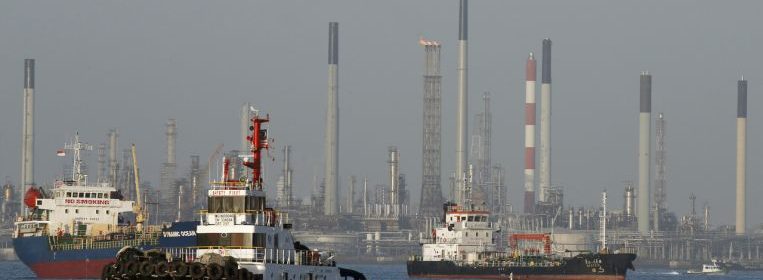Tourism lull from Thailand to Singapore is damping oil demand

BANGKOK (BLOOMBERG) – South-east Asian oil and fuel demand has hit a plateau after an initial recovery from the Covid-19-induced slump and appears unlikely to get back to pre-virus levels until the end of the year or later.
A slow roll-out of vaccinations and a resurgence in cases in the region of almost 700 million people is pushing back the timeline for a return to business as usual. There are still restrictions on movement in parts of Indonesia and Malaysia, while tourist hot spots in Thailand remain closed. The aviation hub of Singapore hasn’t had much success in starting travel bubbles with other countries and Myanmar is wracked by civil unrest following a coup.
Indonesian fuel sales are still around 7 per cent below pre-pandemic levels, state-owned energy company PT Pertamina said. Indonesian and Malaysian gasoline demand has recovered “tremendously” since last April last year but the renewed lockdowns have slowed the momentum, according to FGE. Diesel consumption in Indonesia should be back to normal in the third quarter, but the situation in Malaysia is less certain, the industry consultant said.
“We should see gasoline returning on its path of recovery over April and May” during the Muslim fasting period of Ramadan, but diesel demand is a “mixed bag”, said Grayson Lim, a senior oil market analyst at FGE. Refinery runs should keep improving but they’ll still be below pre-virus levels by year-end, he said.
Indonesian run rates are averaging 800,000 barrels a day this quarter, compared with 900,000 before the virus, according to Lim. Malaysian runs are at about 570,000 barrels a day in the first three months of the year, down from 600,000 normally, he said.
In Thailand, gasoline and diesel demand are both only likely to be around 1 per cent higher this year than in 2020, according to IRPC. The refiner plans to boost run rates at its plant in Rayong province to 95 per cent to 97 per cent of capacity in the second half from 86 per cent to 88 per cent in the first six months, a spokesperson said in e-mailed response to questions.
Another Thai refiner, Bangchak, is restarting its 120,000 barrels a day refinery this month following maintenance and will run it at full capacity thereafter, a spokesperson said.
Petron, the Philippines’ largest oil company, plans to resume operations at its idled refinery in the second half as fuel sales rebound. The country has been importing fuel since the 180,000 barrels per day plant was shut last May.
In Myanmar, meanwhile, the worsening protests mean fuel imports will stay muted until the situation is resolved and buyers can regain access to financing, said Sandra Octavia, an analyst at consultant Energy Aspects.
Jet fuel is the laggard in the oil products recovery, both in South-east Asia and globally. Aviation fuel demand will continue to hover at about half of pre-virus levels until international travel restarts, according to IRPC. Demand for jet fuel in Asia as a whole isn’t likely to get back to 2019 levels until 2023, Octavia said.
Asian refining margins are still depressed outside of China and India, which is unlikely to encourage big increases in activity, she said. “For much of the region, run rates will continue to struggle below 2019 levels until regional demand, excluding China and India, shows a collective improvement.”
Join ST’s Telegram channel here and get the latest breaking news delivered to you.
Source: Read Full Article
